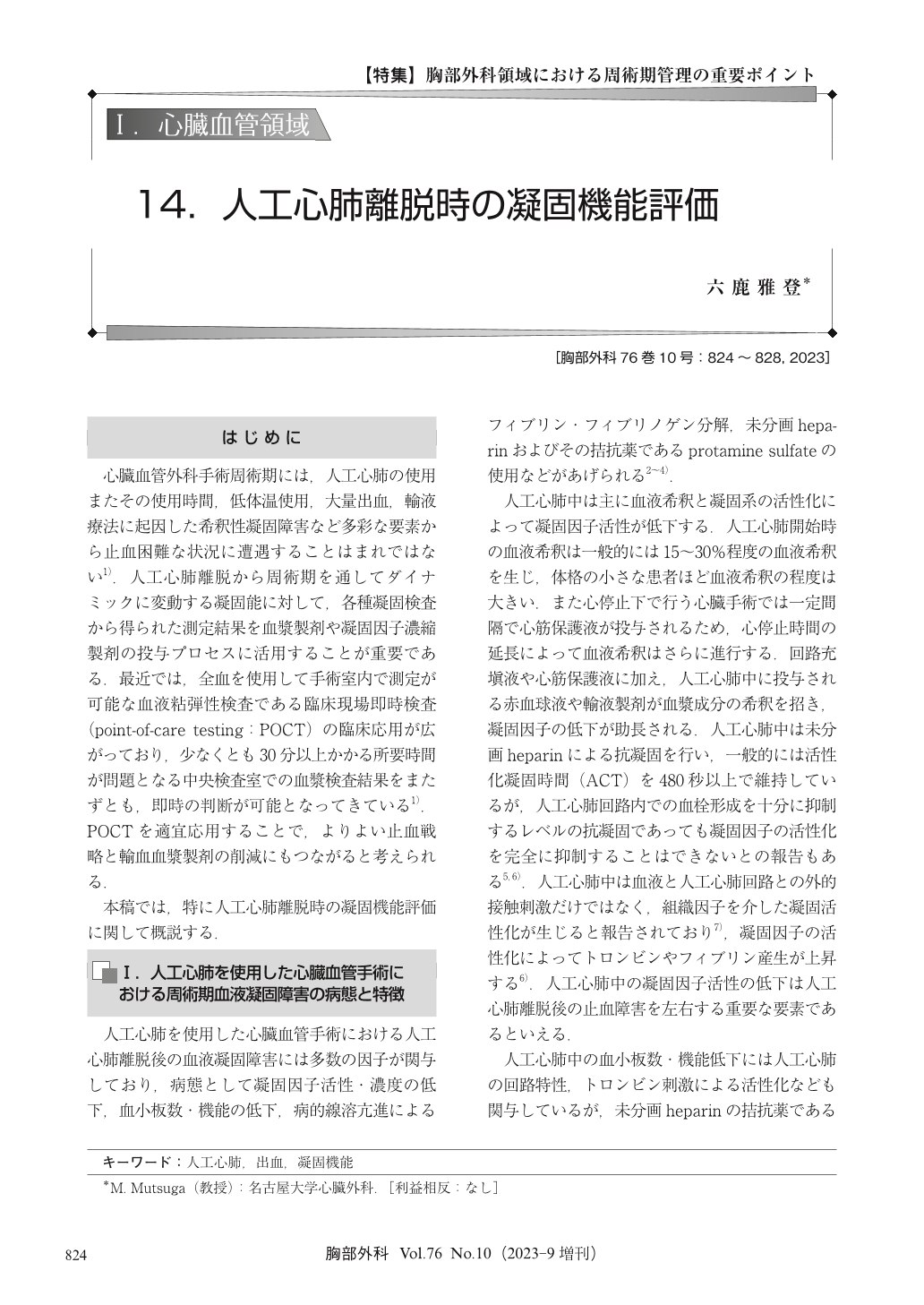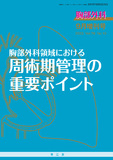Japanese
English
- 有料閲覧
- Abstract 文献概要
- 1ページ目 Look Inside
- 参考文献 Reference
心臓血管外科手術周術期には,人工心肺の使用またその使用時間,低体温使用,大量出血,輸液療法に起因した希釈性凝固障害など多彩な要素から止血困難な状況に遭遇することはまれではない1).人工心肺離脱から周術期を通してダイナミックに変動する凝固能に対して,各種凝固検査から得られた測定結果を血漿製剤や凝固因子濃縮製剤の投与プロセスに活用することが重要である.最近では,全血を使用して手術室内で測定が可能な血液粘弾性検査である臨床現場即時検査(point-of-care testing:POCT)の臨床応用が広がっており,少なくとも30分以上かかる所要時間が問題となる中央検査室での血漿検査結果をまたずとも,即時の判断が可能となってきている1).POCTを適宜応用することで,よりよい止血戦略と輸血血漿製剤の削減にもつながると考えられる.
During cardiopulmonary bypass, the major disturbances in coagulation systems were affected by perioperative hemo-dilutional changes. Dilutional coagulopathy which is usually followed by hemorrhage is often refractory at the end of cardiopulmonary bypass. Thus, perioperative monitoring of coagulation markers might be necessary to estimate the differential diagnosis of hemorrhage and decrease thrombotic complications. It is very important to understand the timely coagulation and hemolysis pattern after the weaning of cardiopulmonary bypass. There is a limitation of central laboratory test to get a real time perioperative hemostatic management. Point-of-care devices are increasingly applied in clinical practice as we used in our practice. The data from these devices are useful to establish optimal hemostatic strategies.

© Nankodo Co., Ltd., 2023


